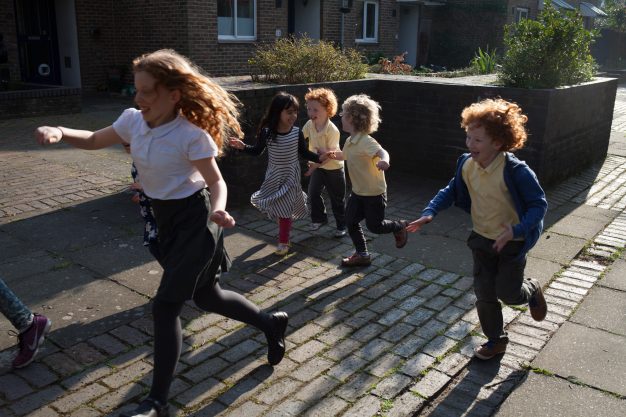
Housing design is key to the playable, child friendly city
At last week’s Child in the City International seminar, architect and design champion for the Mayor of London Dinah Bornat led a parallel workshop session exploring the built environment challenges of creating homes and neighbourhoods were children can play. In this special article, she sums up her approach.
Play is the natural behaviour of children, but is being designed out of cities, both intentionally and unintentionally. The barriers to children playing in the modern city are many and complex. They include: land ownership and control; the lack of perception and understanding of children and young people by adult society; the dearth, in the built in environment, of design features that properly respond to children and young people; and a failure, to date, of child-friendly city advocates to effectively make our case to people who can make a difference.
My presentation at the London seminar looked at how to stop design being one of the barriers to children’s play, and how doing so can lead to better outcomes.
London is a global city and has the opportunity to lead the way in setting out a bold and ambitious agenda for a modern child friendly city
Cities need to become more strategic in how they develop their spatial and built environment plans. They need to be set clear objectives, identify the barriers to achieving these objectives and then invest in – and pay much more attention to – the research that can inform their decisions. Developing policies and plans must then be evidence-based. Projects and schemes must be subject to evidential review and evaluation.
The development gap
One of the big challenges for practitioners and advocates for children’s play and child friendly cities is the gap between development pressures and children. Children are not economically active and so are largely ignored in a system built on growth, profit and product delivery. Advocates must engage with and understand economic policy imperatives, so as to be able to speak the language of development, without losing sight of the primary importance of play for play’s sake.
There is very little understanding – even within the research community – of how children use space. Local neighbourhood space, in particular, is vitally important to children, who use it in different ways to adults. More research is needed in this area. Also, teenagers are almost universally misunderstood. We need to know more about both children and teenagers and their needs from and relationship to space, if we are to not continually fall back on stereotypes, anecdotes and generalisations (all sides of the debate are guilty of this!).
London is a global city and has the opportunity to lead the way in setting out a bold and ambitious agenda for a modern child friendly city. The Child in the City international seminar last week presented the Mayor of London – and other cities of the world – with the kind of aims and objectives, and some of the policies and practices, to make this agenda a reality.
Dinah Bornat
Photo: Madeleine Waller




